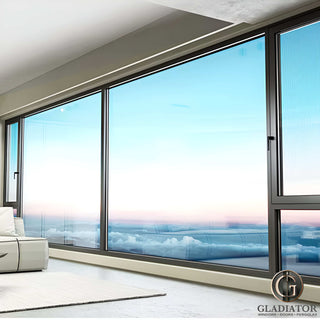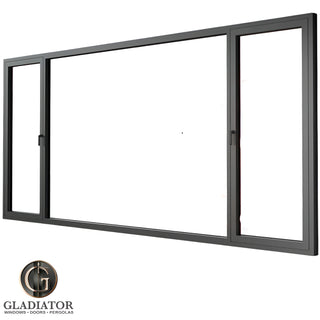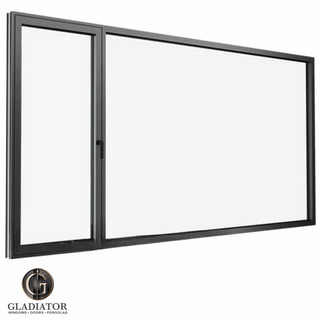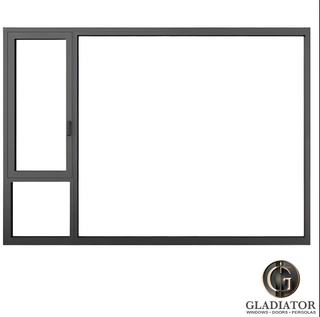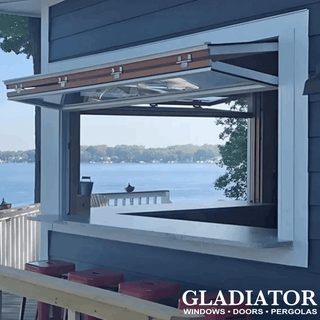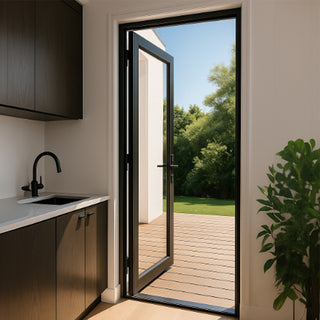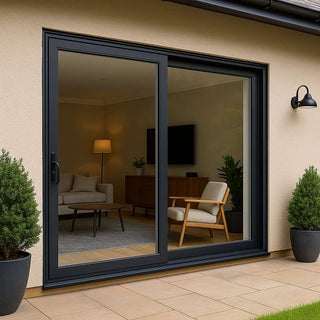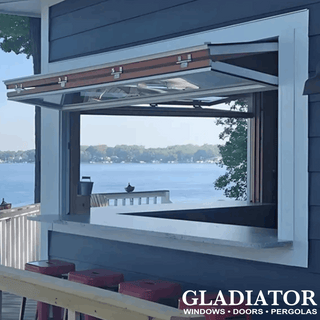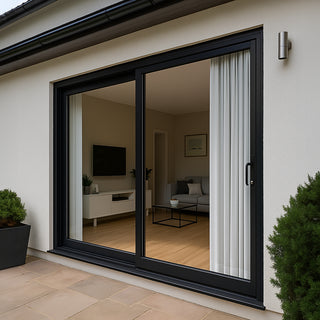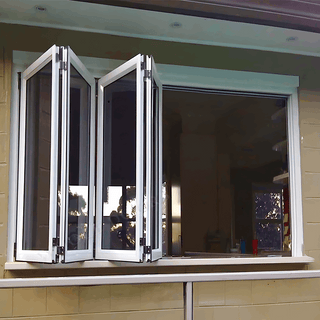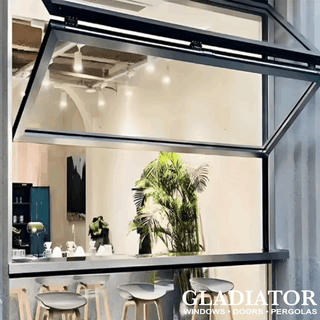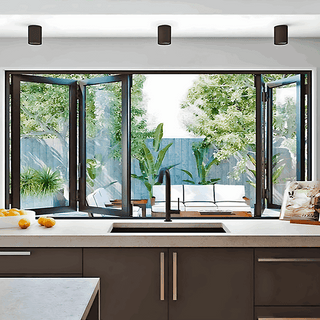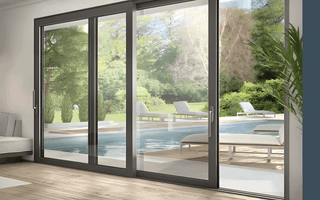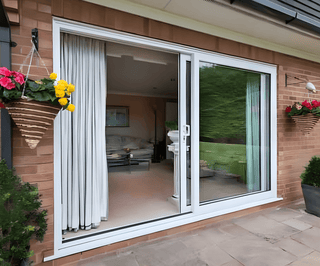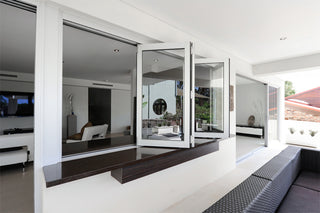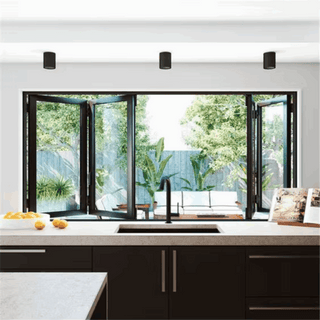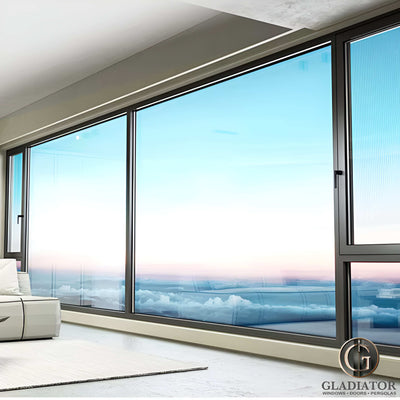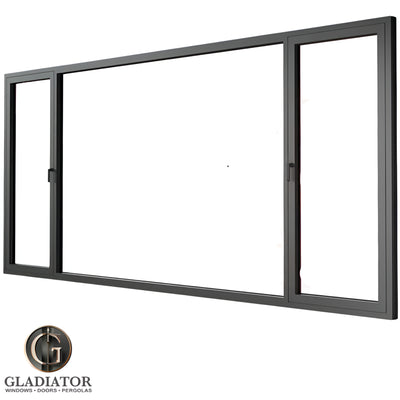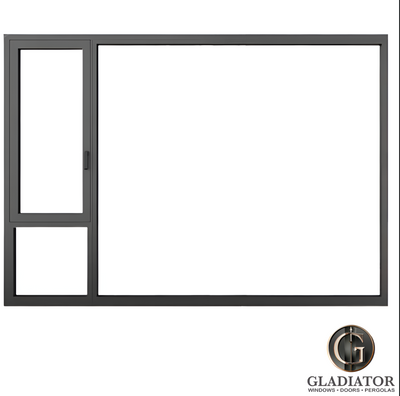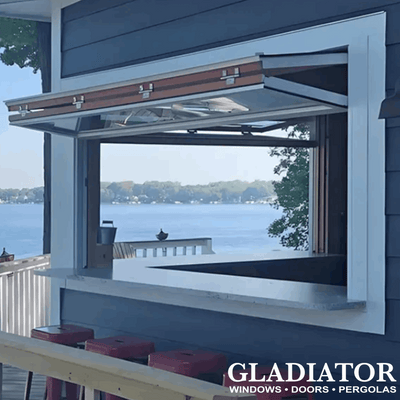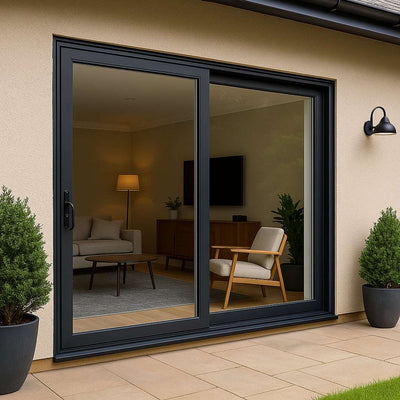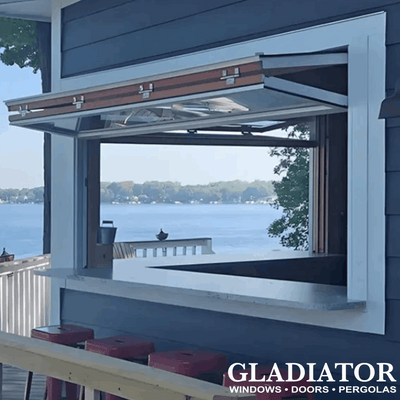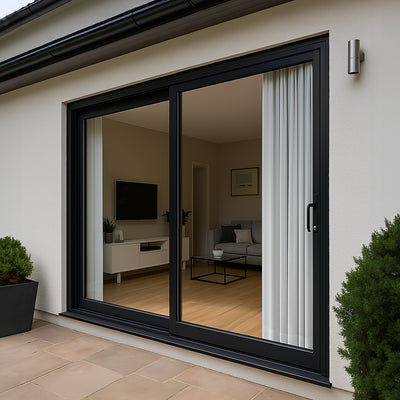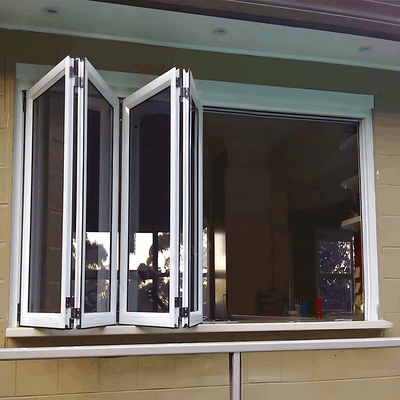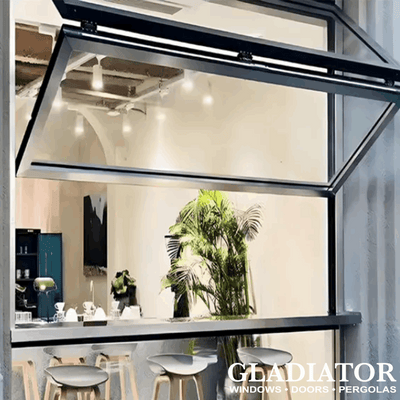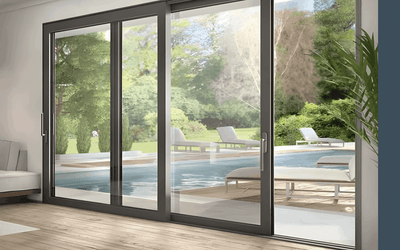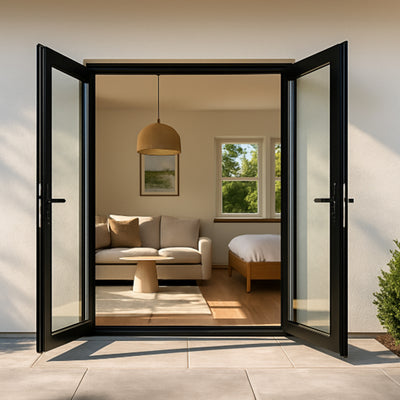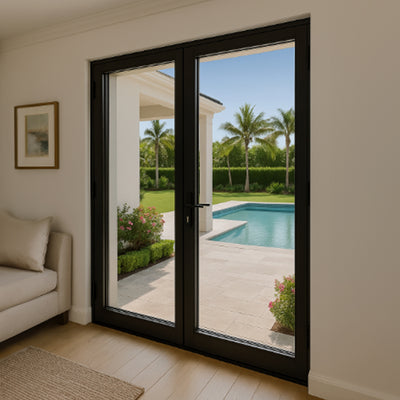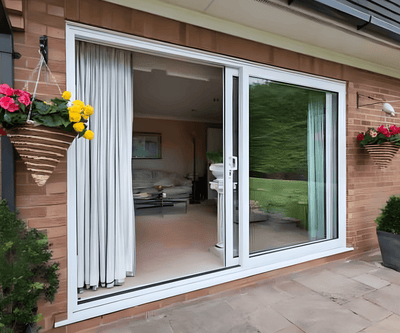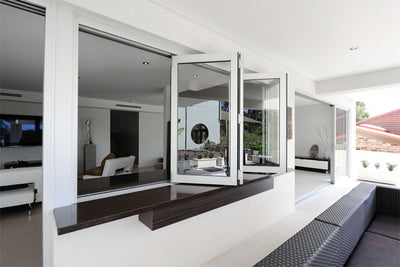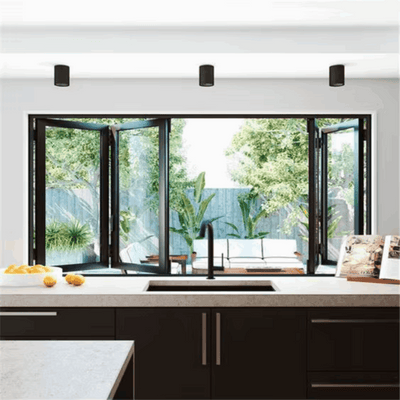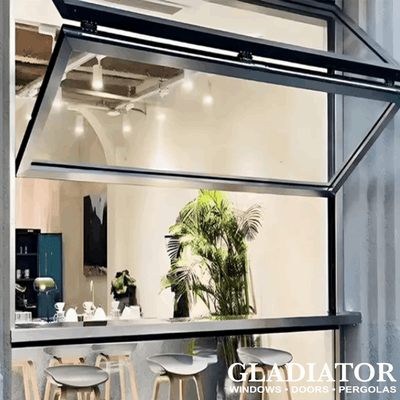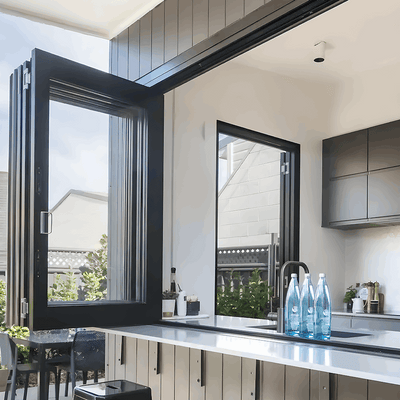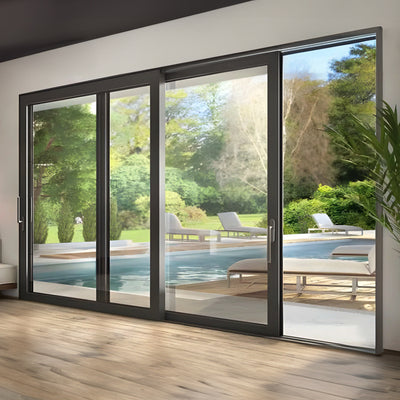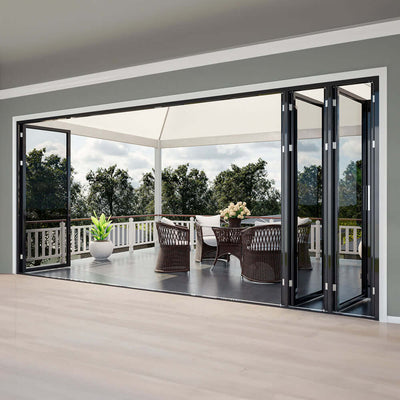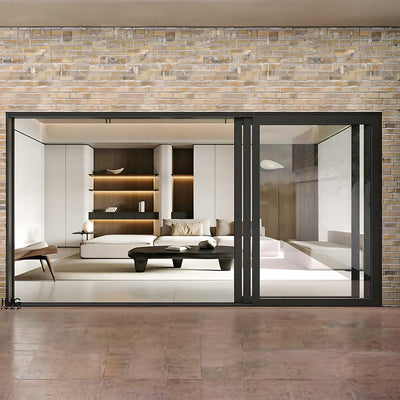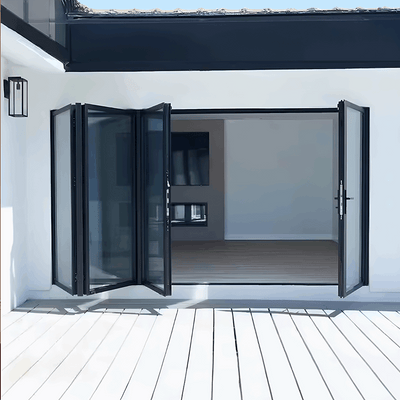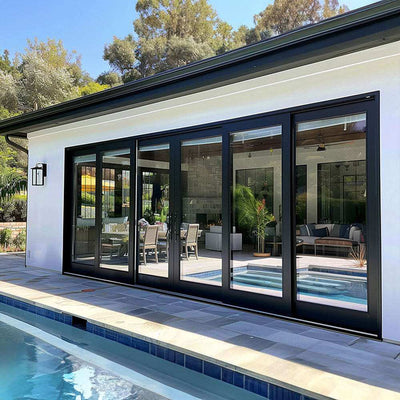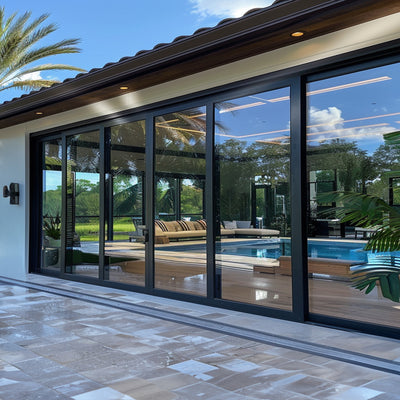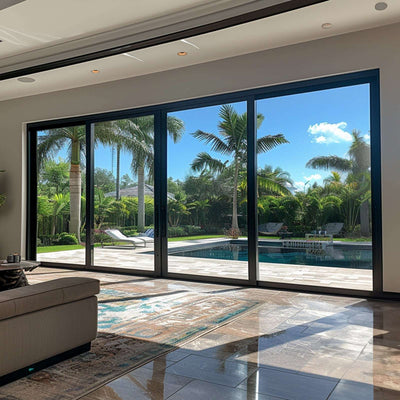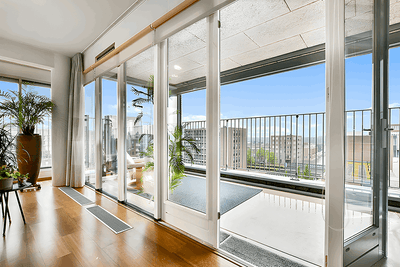Understanding Bifold Door Rough Opening Fundamentals
Bifold doors, known for their efficient use of space, are a popular choice for closets, pantries, and even room dividers. But a successful installation depends on one key factor: accurate rough opening dimensions. These measurements aren't optional; they're absolutely essential for the door to function properly and last. Let's explore the core principles behind these crucial measurements.
Why Precise Measurements Matter
Rough opening dimensions account for more than just the door panels themselves. They also include the frame, track, and hardware. It's similar to framing a picture: the frame requires extra space beyond the picture's edges. Likewise, the rough opening provides the clearances needed for the bifold door system to operate smoothly. Too little space can cause binding, sticking, and difficulty opening or closing. Too much space can compromise stability and the door's seal.
Imagine trying to squeeze a large picture into a tiny frame – it just won't fit. Similarly, forcing a bifold door into an undersized opening will create operational issues. Proper clearances are also essential for thermal expansion. As temperatures change throughout the year, door panels expand and contract. Without enough room for this movement, the doors could warp, crack, or become difficult to operate.
The Relationship Between Door Panels and the Rough Opening
Calculating the relationship between door panel dimensions and the rough opening is a precise process. The rough opening needs to be slightly larger than the combined width of the door panels to accommodate the frame and necessary clearances. This usually involves adding a specific amount to the door panel width and height, as determined by the manufacturer. For a helpful guide, check out this Essential Bifold Door Installation Guide.
Standardization is also an important factor. Over the last ten years, the bifold door market has seen increasing standardization of rough opening dimensions, especially in North America and Europe. Roughly 80% of residential installations now adhere to either a 36-inch or 72-inch width pattern. This standardization arose from the need to efficiently accommodate both single and double bifold doors. A standard 36-inch bifold door, common for bedrooms and closets, typically requires a 36-inch wide by 81-inch tall rough opening, even though the actual door panels usually measure 35.5 inches by 79 inches. You can find more information on bifold door sizing here.
Identifying the Critical Measurements
For a successful bifold door installation, understanding the key measurements of the rough opening is crucial. These measurements include:
- Width: The horizontal distance between the rough opening’s side jambs.
- Height: The vertical distance from the finished floor to the top of the rough opening header.
- Depth: The thickness of the wall framing.
Each of these measurements is vital for proper fit and smooth operation. Inaccurate measurements in any of these areas can lead to problems ranging from doors that won’t close correctly to structural issues. Therefore, accurate measurements are paramount. Precise measurements ensure smooth operation, prevent costly rework, and contribute to the door's longevity.
Standard Rough Opening Dimensions That Actually Work
Navigating bifold door sizes can be tricky. Beyond the manufacturer's specs, there are practical measurements that ensure a smooth installation and long-term performance. Let's explore these real-world dimensions and why they've become industry standards.
Common Bifold Door Sizes and Their Rough Openings
Understanding the relationship between bifold door sizes and rough openings is key. The rough opening is the space within the wall frame where the entire door system, including the frame and hardware, will fit. For instance, a common bifold door might be 36 inches wide by 80 inches tall. Its rough opening needs to be slightly larger.
For a typical interior door with drywall, add 2 inches to the door's width and 1 inch to its height. So, for that 36x80 door, the rough opening should be 38 inches wide by 81 inches tall. This extra space ensures a snug fit and smooth operation.
For a deeper dive into door measurements, check out this helpful guide: How to master door measurements.
To illustrate standard rough opening dimensions, let's look at the table below:
Standard Bifold Door Rough Opening Dimensions Comprehensive comparison of rough opening dimensions for different bifold door types and applications
| Door Type | Door Size (WxH) | Rough Opening Width | Rough Opening Height | Application |
|---|---|---|---|---|
| Standard Bifold | 30x80 inches | 32 inches | 81 inches | Closets, Pantries |
| Standard Bifold | 36x80 inches | 38 inches | 81 inches | Bedrooms, Hallways |
| Double Bifold | 60x80 inches | 62 inches | 81 inches | Wider Openings, Room Dividers |
| Double Bifold | 72x80 inches | 74 inches | 81 inches | Large Closets, Storage Areas |
This table provides a quick reference for common bifold door sizes and their corresponding rough openings. Remember to always double-check with the manufacturer's instructions.
The Importance of Accurate Measurement
Accurate measurement is crucial for bifold door rough openings. Even a small error can cause major installation problems, like binding, difficulty opening and closing, and poor seals. 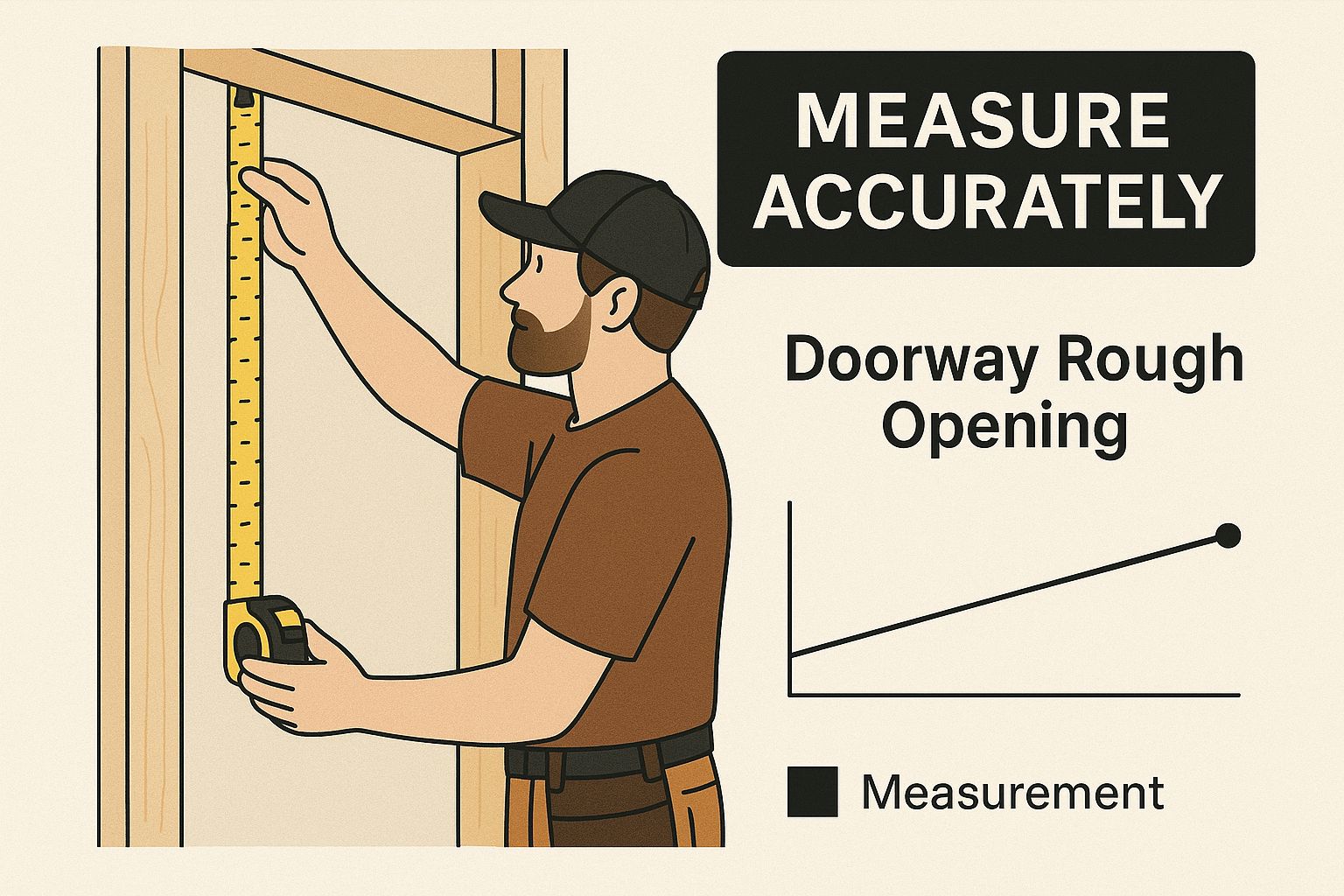 This infographic highlights the need for precision. Remember to "Measure Accurately." Accurate measurement involves the entire system: the door, frame, track, and hardware. This ensures a smooth and functional installation.
This infographic highlights the need for precision. Remember to "Measure Accurately." Accurate measurement involves the entire system: the door, frame, track, and hardware. This ensures a smooth and functional installation.
Regional Variations and Building Codes
While standard dimensions are helpful, regional variations and local building codes can impact requirements. Some areas require wider openings for accessibility, while others have specific fire-rated door regulations. Always consult your local building codes and manufacturer specifications. This proactive step avoids costly rework and ensures your doors last.
Beyond the Standards: When to Deviate
Standard sizes are usually fine, but unique situations may require adjustments. Older homes with uneven walls or custom-built houses with non-standard openings may need adjusted dimensions. In these cases, precise on-site measurements are essential. Take measurements at multiple points to account for variations. Consulting a professional installer is also a good idea.
Consequences of Incorrect Dimensions
Incorrect rough opening dimensions can have serious consequences. A too-small opening can prevent installation or cause the door to bind. A too-large opening can weaken the door and create unsightly gaps. These issues affect functionality, aesthetics, and even energy efficiency due to poor sealing. Understanding the importance of accurate dimensions ensures a smooth, functional, and long-lasting installation.
Why Taller Doors Are Changing Everything
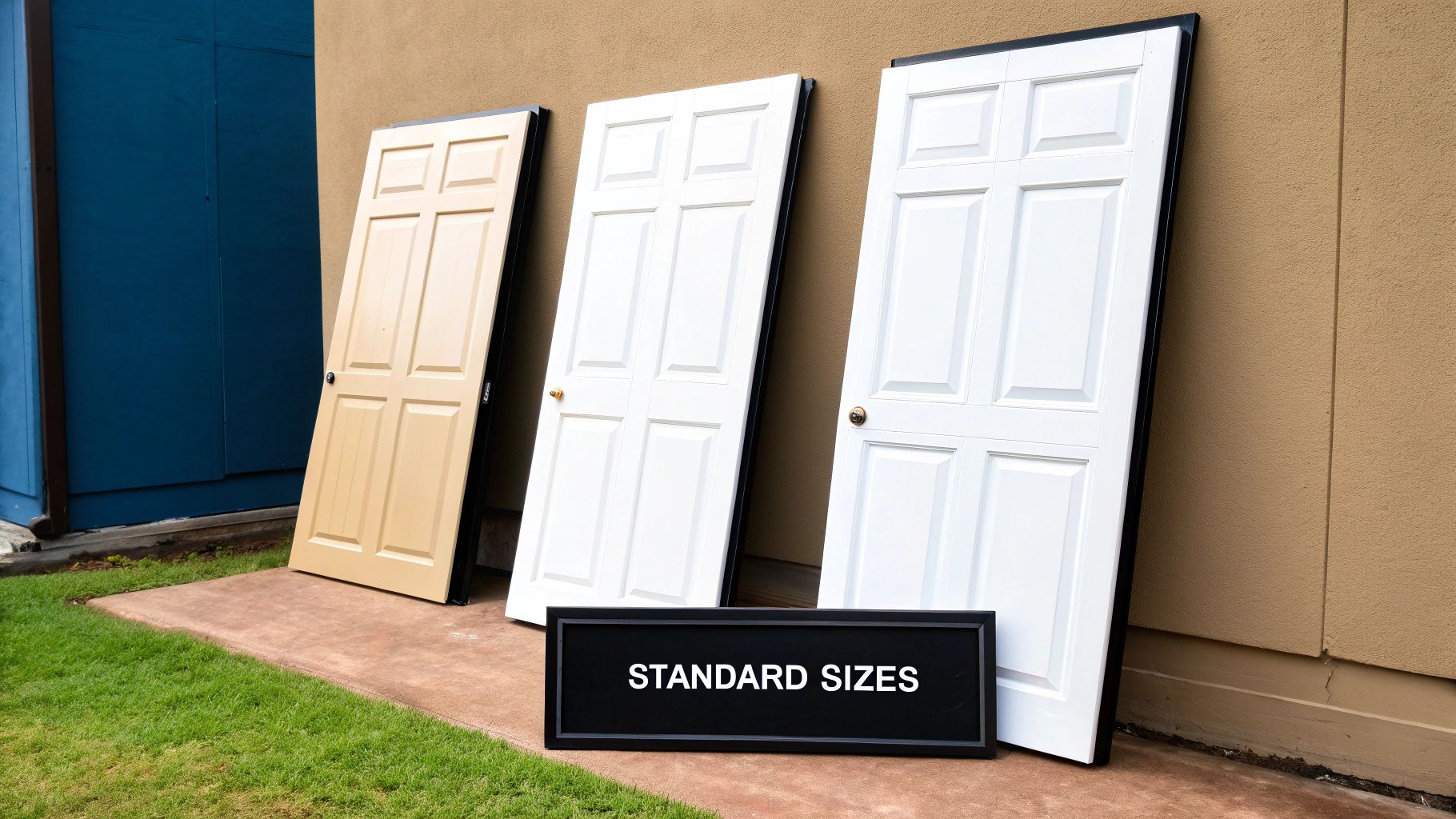
The bifold door industry is experiencing a noticeable shift. The once-standard 80-inch door is giving way to taller options. This move towards heights of 96 inches or more is changing how we think about rough opening dimensions. It’s not simply a cosmetic trend; it reflects evolving homeowner desires and architectural styles.
The Rise of Taller Doors
The 80-inch door was a mainstay for many years. But modern homes are increasingly built with higher ceilings. This has created a demand for taller doors that complement these grander spaces. Taller doors enhance the feeling of spaciousness by allowing more natural light and creating a more dramatic visual appeal. Consequently, rough opening dimensions must also change to accommodate these taller door systems.
Taller doors also offer practical benefits. Improved accessibility is one key advantage. They make moving large furniture easier and accommodate people of all heights. Think about how much simpler it would be to move a large sofa or armoire through a taller doorway.
Recent trends further highlight the growing popularity of taller bifold doors. An analysis of door manufacturing data from 2018–2023 reveals a global increase in taller rough openings. The traditional 80-inch height is being replaced by 96-inch heights for bifold doors in both residential and commercial buildings. In the United States, almost 30% of new bifold installations now feature a rough opening height of 96–98 inches. This demonstrates both design trends and practical advantages, such as increased headroom and easier access. Learn more here.
Adapting to the Change
This trend towards taller doors presents both opportunities and challenges for installers. Structural support is a primary concern. Taller doors put more stress on the header. This often requires careful planning and potentially reinforced framing. Contractors must be aware of these structural considerations when planning installations. You might find this article interesting: Bifold vs. Sliding Doors: 7 Best Options in 2025.
Installation Techniques for Taller Doors
Installing taller doors requires different techniques. The added weight and size can make maneuvering the panels challenging. This may necessitate specialized equipment or additional workers. But the result is a visually stunning upgrade and improved functionality that homeowners value.
Strategies for Existing Structures
Adding taller doors to existing structures without major renovations can be tricky. But there are creative solutions. One method involves lowering the finished floor level or raising the header. Another strategy is to use transom windows above the door. This maintains the desired visual height without significant structural modifications. This allows homeowners to incorporate taller doors without undertaking expensive renovations. Careful planning and close attention to detail are essential for successfully integrating taller doors into any home.
Measuring Like a Pro: Getting It Right Every Time
Accurate measurement is crucial for a successful bifold door installation. Taking the time to measure meticulously can prevent costly mistakes and ensure a smooth process. Precise measurements are the key to avoiding expensive do-overs.
Essential Tools for Accurate Measurement
Before starting, gather the necessary tools. You'll need a tape measure (a 25-foot tape is recommended for larger openings), a 4-foot level, a pencil, and a notepad. A framing square can help ensure square corners. A laser measuring tool, while optional, can offer increased accuracy, especially for large spaces.
Step-by-Step Measurement Guide
Measuring bifold door rough openings requires a systematic approach. First, measure the width at the top, middle, and bottom of the opening. Record the smallest of these three measurements to account for wall variations.
Next, measure the height in multiple locations. Measure from the finished floor (or the subfloor if flooring isn't yet installed) to the underside of the header. Use the largest height measurement for your calculations.
Finally, measure the wall framing depth. This determines the correct frame size. Common wall thicknesses are 4 7/8 inches for 2x4 framing and 6 7/8 inches for 2x6 framing.
For instance, if your smallest width is 71 inches and your largest height is 80 inches, your rough opening should be 73 inches wide by 81 inches tall for a standard interior door. This provides the necessary 1-inch clearance on each side and top. For more guidance on door measurements, check out this helpful resource: How to master door measurements.
Handling Uneven Walls and Other Challenges
Walls, especially in older homes, can settle and become uneven. Measure at multiple points to find the narrowest width and tallest height of the opening. Shims can be used during installation to correct minor irregularities. For significant discrepancies, consult a professional.
Validation and Documentation
After measuring, double-check everything. This simple step can save a lot of trouble down the line. Clearly document all measurements in your notepad or on a sketch of the opening. Note any irregularities or special considerations. This detailed record is crucial when ordering bifold doors and communicating with suppliers.
To help ensure accurate measurements, use the following checklist:
Bifold Door Measurement Checklist
Step-by-step measurement guide with required clearances and tolerance specifications
| Measurement Point | Required Clearance | Tolerance | Critical Notes |
|---|---|---|---|
| Width | 1 inch on each side | +/- 1/8 inch | Measure at top, middle, and bottom; use smallest measurement |
| Height | 1 inch at top | +/- 1/8 inch | Measure at multiple points; use largest measurement |
| Depth | Varies based on wall framing (4 7/8" or 6 7/8") | +/- 1/4 inch | Essential for correct frame size |
This checklist provides a quick reference for critical measurements and tolerances. Always double-check measurements and record them carefully.
Professional Tips for Success
Here are some extra tips from experienced professionals:
- Account for flooring: Include new flooring thickness in your height measurement.
- Consider clearances: Factor in clearances for hardware, tracks, and trim.
- Consult manufacturer specifications: Refer to the manufacturer's instructions for specific rough opening recommendations for your chosen bifold door model.
- Communicate clearly: Provide your supplier with clear, detailed measurements to prevent errors.
By following these steps and measuring accurately, you'll be well on your way to a smooth installation and a beautiful, functional bifold door that will enhance your home for years to come.
Avoiding the Mistakes That Cost You Money
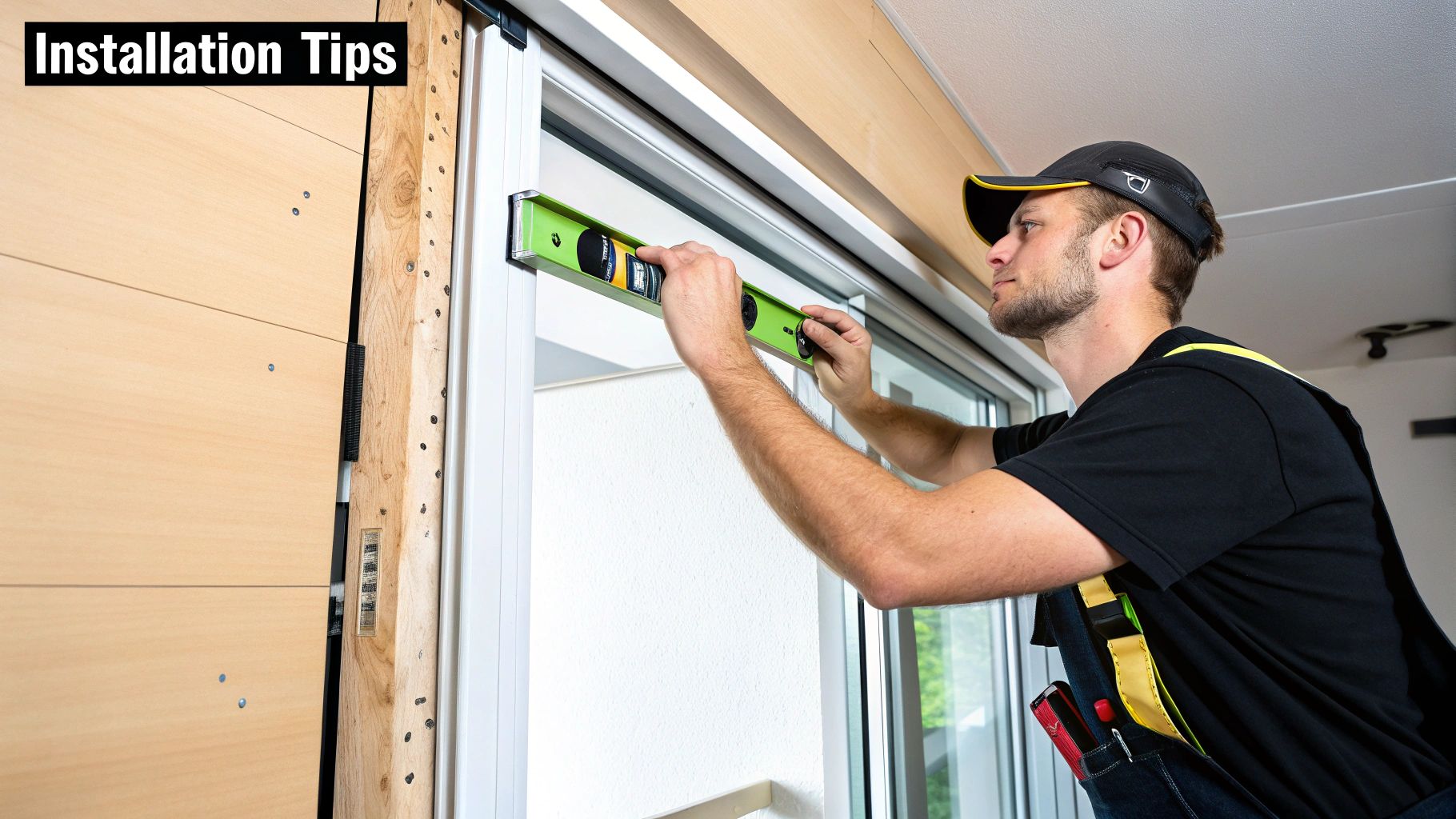
Bifold door installations can be tricky. While they appear simple, even small errors in the bifold door rough opening dimensions can cause big problems and require expensive fixes. This section explores common issues and how to avoid them.
The Cost of Inadequate Clearances
One of the most common mistakes is not leaving enough space around the door frame. This can make the doors stick, bind, and difficult to operate. It's like trying to force a drawer closed when it's overstuffed. Insufficient clearance restricts the door's movement and can damage the panels over time.
This problem is often made worse by not accounting for material expansion. Wood, a popular choice for bifold doors, expands and contracts with changes in temperature and humidity. Without enough clearance, this natural movement can warp, bind, or even crack the doors.
The Perils of Improper Structural Support
Another crucial mistake is overlooking proper structural support, especially for wider or taller bifold doors. Their weight can strain the header, causing it to sag or even leading to structural damage. It's similar to building a bridge without the right supports – a recipe for disaster. Reinforcing the header is often needed for larger bifold door systems to ensure stability and avoid future repairs.
Incorrectly fastening the track system can also impact the door's operation and lifespan. The track needs to be securely attached to solid framing for smooth movement and to prevent derailment.
The Impact of Dimensional Errors
Even small errors in the rough opening can have major consequences. A frequent mistake is forgetting the 1/2 inch clearance needed on each side for the hardware. This seemingly small detail can make the doors bind or prevent them from closing correctly.
Industry data shows that 73% of bifold door installation callbacks are due to incorrect rough opening dimensions. Undersized openings account for 89% of these issues. The most common error is not including that crucial 1/2-inch clearance on each side, resulting in poorly functioning doors. More detailed statistics can be found here.
Preventive Measures for a Smooth Installation
Experienced installers use several techniques to prevent these costly errors. Careful planning is crucial, including precise measurements and considering all parts, from the door panels and frame to the track and hardware. You might find these Expert Bifold Door Adjustment Tips for Smooth Operation helpful.
Here are some best practices:
- Triple-check measurements: Measure the rough opening's width, height, and depth at multiple points to check for variations in the wall.
- Consult manufacturer specifications: Refer to the manufacturer's instructions for the specific rough opening dimensions for your bifold door model.
- Account for material expansion: Consider how temperature and humidity changes might affect the door material.
- Verify structural support: Ensure sufficient structural support, especially for larger or heavier bifold door systems.
- Use quality shims: Use good quality shims for adjustments during installation to ensure a plumb and level fit.
By following these steps, you can greatly reduce the risk of expensive mistakes and ensure a smooth, functional, and long-lasting bifold door installation. This saves you money and builds your reputation as a skilled installer.
Professional Installation Strategies That Work
A successful bifold door installation requires more than just knowing the correct bifold door rough opening dimensions. It takes a combination of technical expertise, careful planning, and hands-on experience. Let's explore the key strategies that set professional installations apart.
Material Selection and Structural Reinforcement
Choosing the right materials significantly impacts the lifespan and performance of your bifold doors. Professionals carefully evaluate factors like material durability, weather resistance, and the door's intended function. Exterior doors, for example, demand weather-resistant materials, while interior applications might prioritize aesthetics or soundproofing.
Structural reinforcement is often essential, particularly for larger, heavier doors. Reinforcing the header with additional lumber prevents sagging and ensures long-term stability. This proactive measure avoids potential issues down the line and guarantees a secure, lasting installation.
The Installation Sequence: A Step-by-Step Approach
The installation sequence is just as crucial as the components themselves. A professional follows a precise order to minimize errors and maximize efficiency.
- Prepare the Opening: The first critical step is ensuring the rough opening is square, plumb, and level. This provides a solid foundation for a smooth installation.
- Install the Track: Securely attaching the track to solid framing is vital for effortless door operation. This step prevents derailment and ensures the door glides smoothly.
- Hang the Door Panels: Carefully hang the door panels on the track, paying close attention to proper alignment and movement. Precision and patience are paramount here.
- Install Hardware: Install handles, latches, and other hardware, ensuring everything functions correctly. These finishing touches complete the installation.
- Test and Adjust: Thoroughly test the door's operation, making any necessary adjustments to ensure smooth opening and closing. This final check guarantees optimal performance.
Advanced Strategies for Challenging Installations
Experienced installers are skilled at handling complex installations. They adapt their techniques when working with retrofit applications, load-bearing walls, or integrating bifold doors with existing architectural elements.
- Retrofit Applications: Integrating bifold doors into existing structures often involves adapting to non-standard openings or existing framing. Professionals are adept at making these adjustments.
- Load-Bearing Considerations: When dealing with load-bearing walls, consulting a structural engineer is often necessary to maintain the wall's integrity.
- Integration with Existing Architecture: Seamlessly blending bifold doors with existing features like windows requires precise measurements and meticulous planning.
Quality Control and Testing
Professionals prioritize quality control, implementing testing procedures to verify proper operation before final completion. This meticulous approach ensures flawless function and client satisfaction.
Thorough testing includes checking for smooth opening and closing, secure latching, and proper alignment. This attention to detail helps identify and address potential issues early on.
Seeking Expert Advice and Handling Unexpected Complications
Knowing when to consult specialists, like structural engineers, is a hallmark of a professional. They recognize their limitations and seek expert advice when needed, ensuring project safety and structural integrity.
Unexpected complications are common in construction. Experienced installers handle these challenges calmly and efficiently, using problem-solving skills and adaptability to maintain professional standards, even under pressure. This keeps the project on track and ensures quality isn't compromised.
Ready to enhance your home with beautiful, functional bifold doors? Explore the selection at Gladiator Window and Doors and discover how we can bring your vision to life. We offer the lowest prices in the USA, backed by our Best Offer Guarantee. Visit us today for a free consultation and experience the difference quality and affordability can make.

















